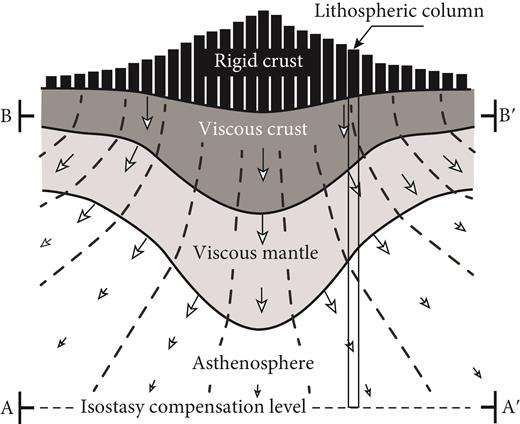Warmer conditions prevalent in the hinterland of orogenic systems facilitate local ductile flow underneath the surface load, making Airy-like local isostasy more prevalent in these domains. In contrast, flexural isostasy better describes the regional response to surface loading of more rigid lithospheres. Here, we explore how the interaction between horizontal tectonic mass transfer and vertical isostatic mass transfer, through either elastic flexure or viscous flow, impacts the overall architecture of fold and thrust belts. We compare numerical models of fold and thrust belts under either an Airy-like ductile isostasy boundary condition or a flexural-like regional isostasy boundary condition. Our experiments suggest that when ductile flow is involved in accommodating isostatic adjustment, subsidence is rather local, larger, and results in narrower, less elevated fold- thrust belts with a complex internal architecture consisting of prominent steeply dipping faults. When isostatic subsidence is controlled by lithospheric flexure, the tilting of the basement on 10 s of km scale facilitates the outward propagation of fold- thrust belts. The internal architecture is simpler and involves prominent basement-parallel décollements. The outcome is wider fold and thrust belts with higher topographies. A change in lithospheric elastic thickness does not significantly affect fold- thrust belt structural styles. Our results are compared to natural examples from the Subandean zone.

Youseph IbrahimPatrice F. Rey; The Role of Isostasy in the Evolution and Architecture of Fold and Thrust Belts. Lithosphere 2023;; 2023 (1): 8503619. doi: https://doi.org/10.2113/2023/8503619
![]()
